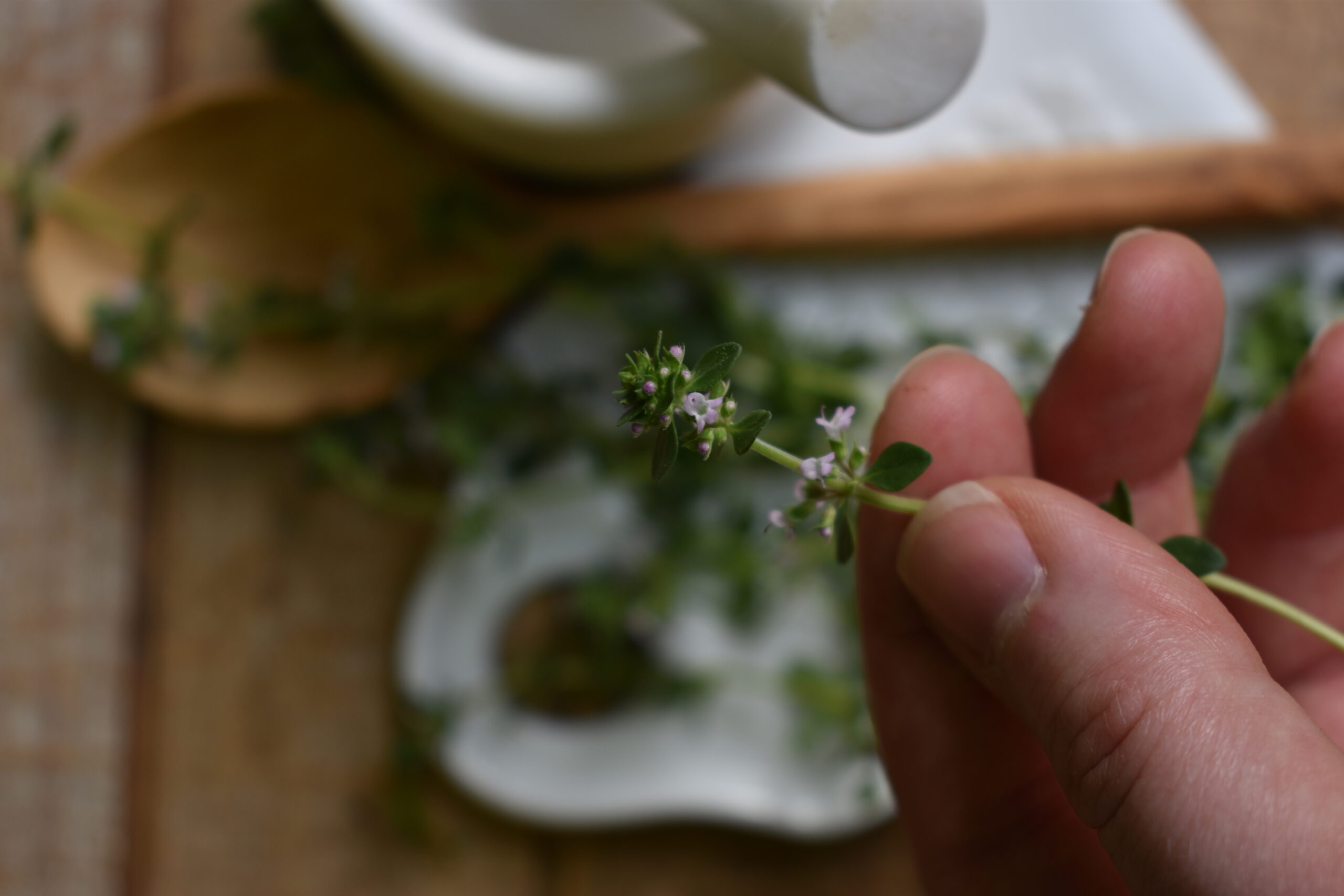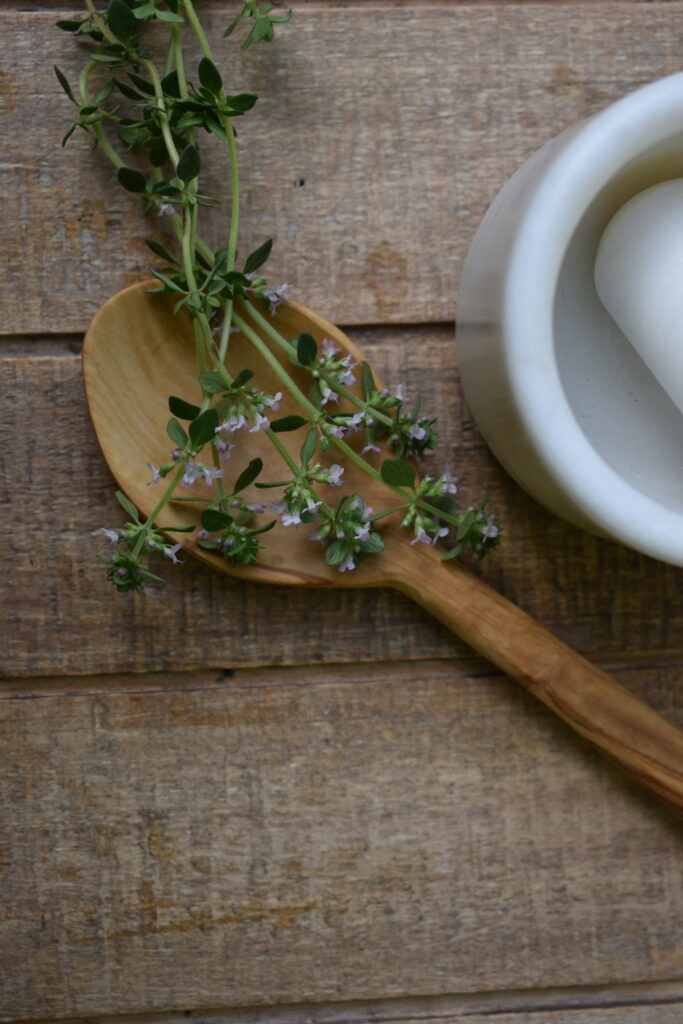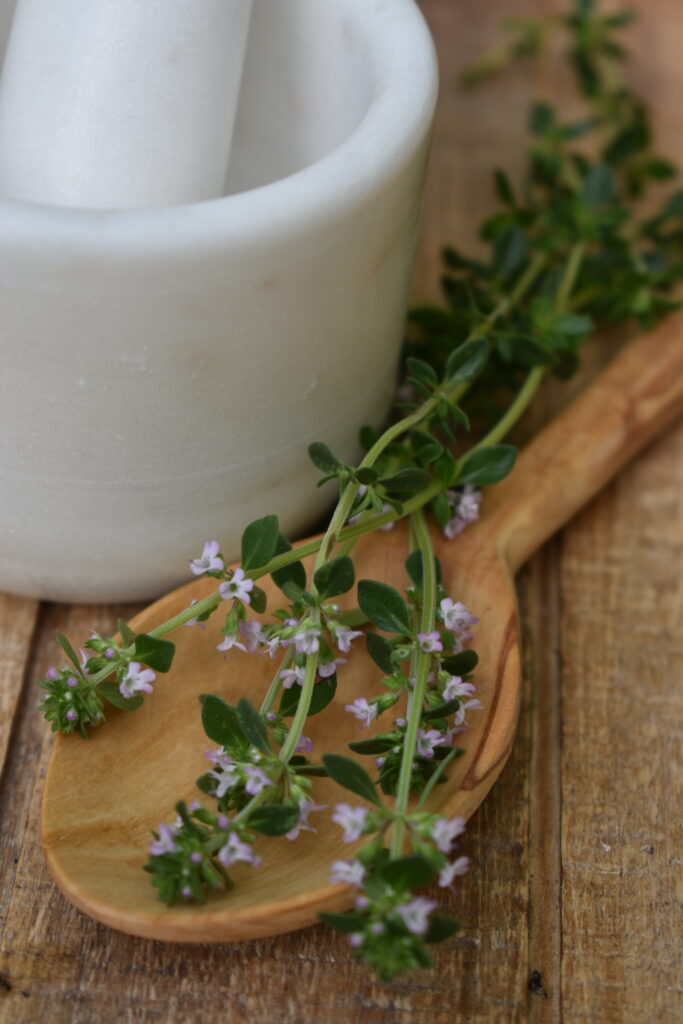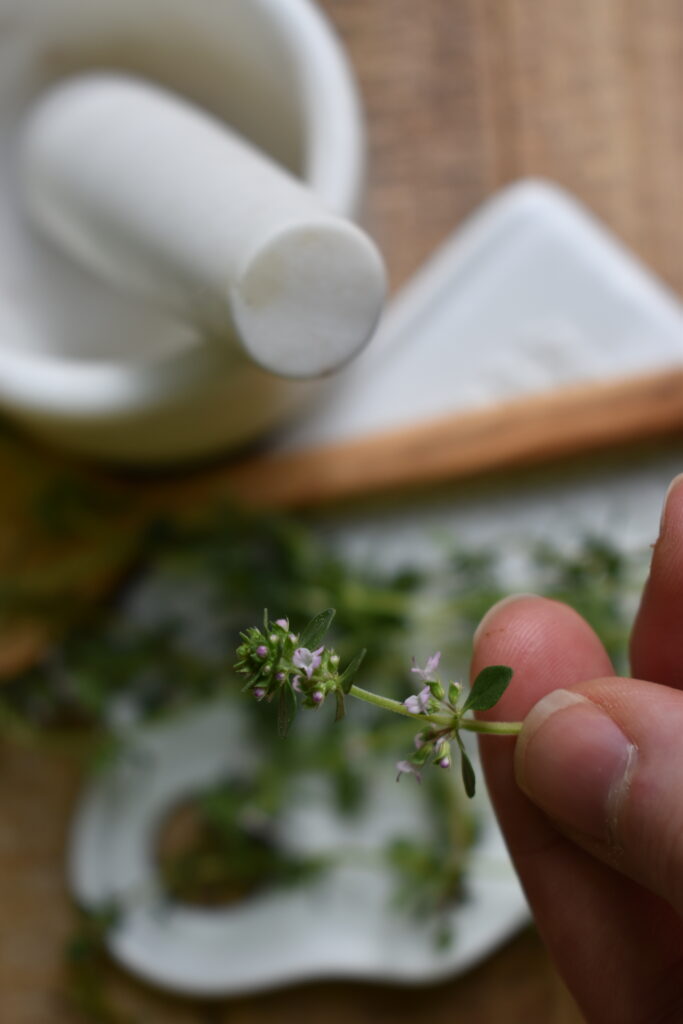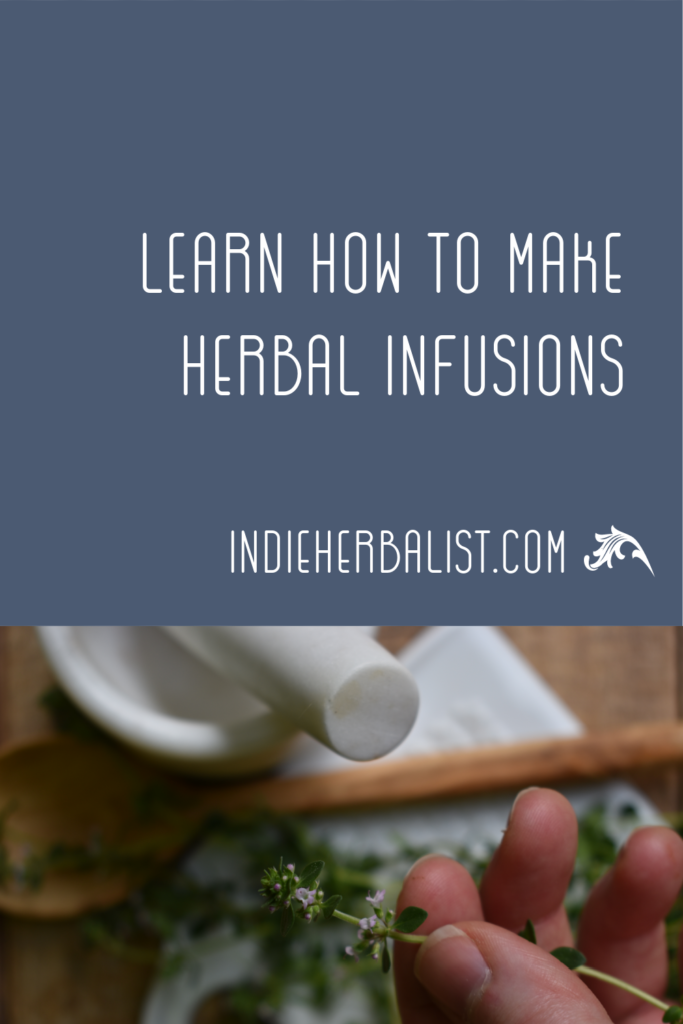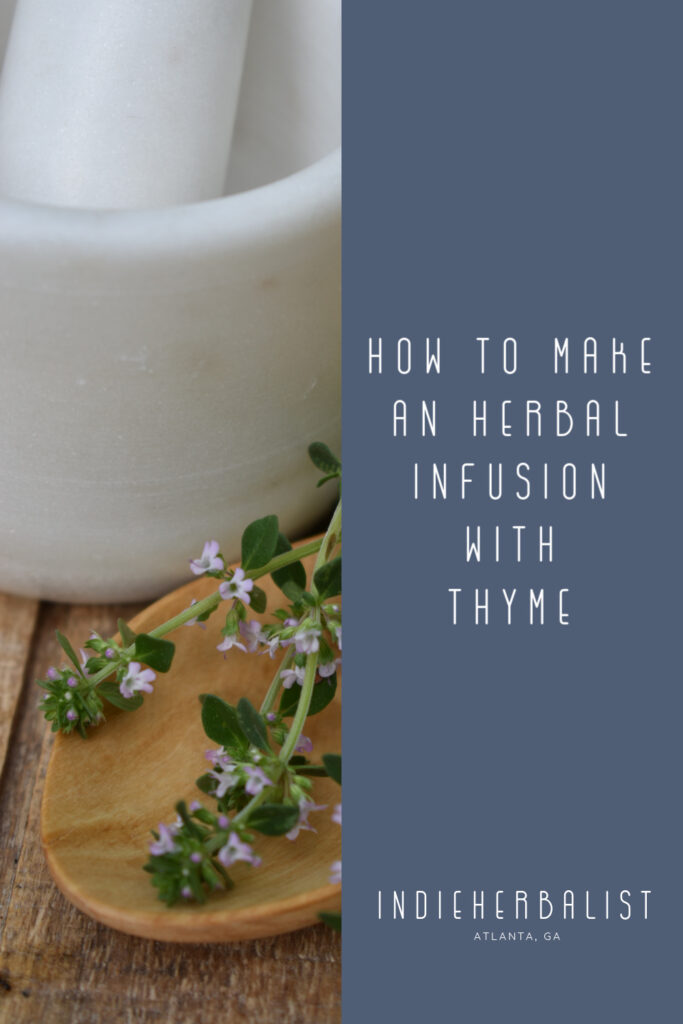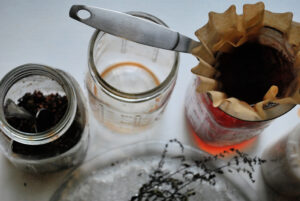Links contained in this post and elsewhere on my website may include affiliate links. When you make a purchase through these links, I earn a commission at no additional cost to you. I only link to products and services that I love - and that I think you will love, too!
A simple brew of herbs and water is the most basic of herbal preparations. However, it’s a staple for home herbalists for a reason! This effective style of preparing herbs gets right down to basics without sacrificing quality or benefits. Herbal infusions are made with leaves and flowers, while decoctions are made with roots, barks, and berries. Here’s what you need to know about making each.
In today’s article, I will explain how to make an herbal infusion with fresh thyme, and how to make a decoction with fresh ginger. Both are readily available at most grocery stores, so you shouldn’t have trouble finding ingredients.
Time Needed: 20-30 minutes
Tools Needed: Small enamel pot
3 cups of water
1 glass canning jar (16oz size or larger)
Fresh ginger root
Fresh thyme
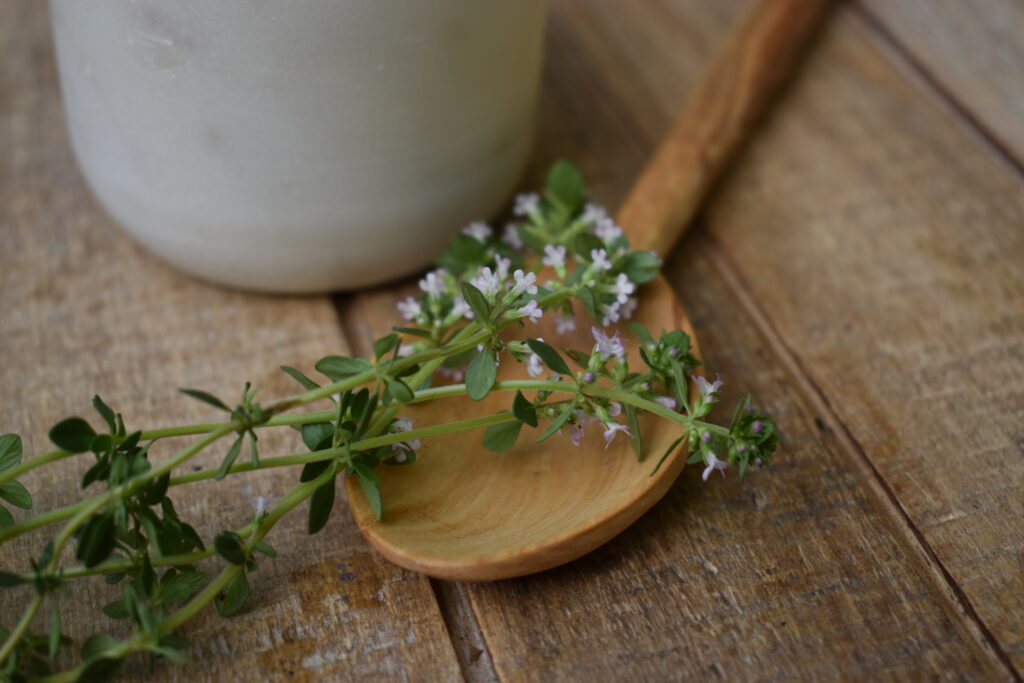
Q&A about herbal infusions
When preparing herbs in water, it’s important to remember that there are two basic preparations: infusions and decoctions. Infusions are made with leaves and flowers. Decoctions utilize heavier, denser materials like roots, barks, and dried berries. Today, let’s look at the most basic way to prepare herbal infusions.
Once you’ve mastered how to make herbal infusions, you’ve actually mastered how to make several preparations – including herbal baths and compresses! Let’s start with a little question and answer session to help you make your own herbal infusions.
How much of an herb goes into an infusion?
Depending on the herb or the situation, anywhere from 1-3 teaspoons or 1-3 tablespoons of fresh or dried herb may be appropriate. Fresh herbs are less potent than dried herbs, so it’s best to use tablespoons instead of teaspoons for fresh. Teaspoons are usually best for dried herbs.
Some herbalists like to be very precise and measure their infusion ingredients by weight (usually in grams). Other herbalists will be even less precise and measure in “pinches” or “palm fulls.”
How do you choose between teaspoons and tablespoons?
Tablespoon quantities are useful when working with mild, nutritive herbs. This is also true when there is an acute imbalance and the infusion is only needed for a day or two. The size and metabolism of the individual using the tea are part of the equation, with the amount of herbs used adjusted up or down accordingly.
Not every herb is suitable for use in tablespoon quantities. Research any new herbs you are working with to determine what typical serving sizes for infusions are. Heroic herbs (aka drop dose or low dose botanicals) come to mind here. They need to be used with precision and awareness. Assistance from an experienced herbalist when working with low dose herbs is important.
What equals one serving of an herbal infusion?
For adults, one serving of an infusion is usually eight ounces. A cup of an infusion, two or three times a day for a week or more when working with a chronic imbalance is common. Every 3-4 hours over 2-3 days when working with an acute imbalance may also be appropriate, gradually decreasing frequency. If desired, an 8 oz serving can be sipped over the course of 30-60 minutes instead of consumed all at once.
How long does an infusion steep?
Herbal infusions commonly steep from 5-10 minutes in a covered cup or pot. The lid helps to keep the aromatic oils from drifting away on the steam. 5-10 minutes is much longer than you would let tea or coffee steep, but that’s because you want as much of the good stuff extracted from your herbs as possible – including the more bitter constituents that you limit by straining most of your for-pleasure drinks before they reach the 5 minute mark.
How to make an herbal infusion with fresh thyme
These directions for thyme are adaptable for most herbal infusions. For this project, you will need:
- 1 tablespoon fresh, finely chopped thyme
- 8 oz of water
1. Place 8 oz of water in a small enamel saucepan with a lid.
2. Bring the water to a boil, turn off the heat, and move the pot to a cool spot on the stove or to a potholder or heat safe trivet on the counter.
3. Remove the lid to add the thyme. Stir gently and briefly with a wooden spoon to help expose the thyme to the hot water, then replace the lid.
4. Allow the infusion to steep for 5-10 minutes, then strain into your mug or teacup. You can add a little natural sweetener of your choice, if desired.
Thyme is more familiar as a cooking herb than as a tea, but I enjoy the woodsy taste and aroma. It’s often in my cup in the winter as an herb for respiratory support. It’s also good in any season as a gentle nervine that’s supportive of emotional and mental health, or as an after-dinner tea to support healthy digestion.
Infusions can also be made directly in your teacup or mug by using a strainer or tea ball, by the way.
Easy, mess-free technique
My favorite way to make infusions is to use a french press. Read my full tutorial in the article The Easiest Way to Make Herbal Teas with No Mess!
This article on the Herbal Academy blog, A Deeper Look at Herbal Infusions, is another great resource for learning about how to make this type of preparation (#affiliate). They even detail how to make infusions using cold water, which is a great technique for certain herbs.
